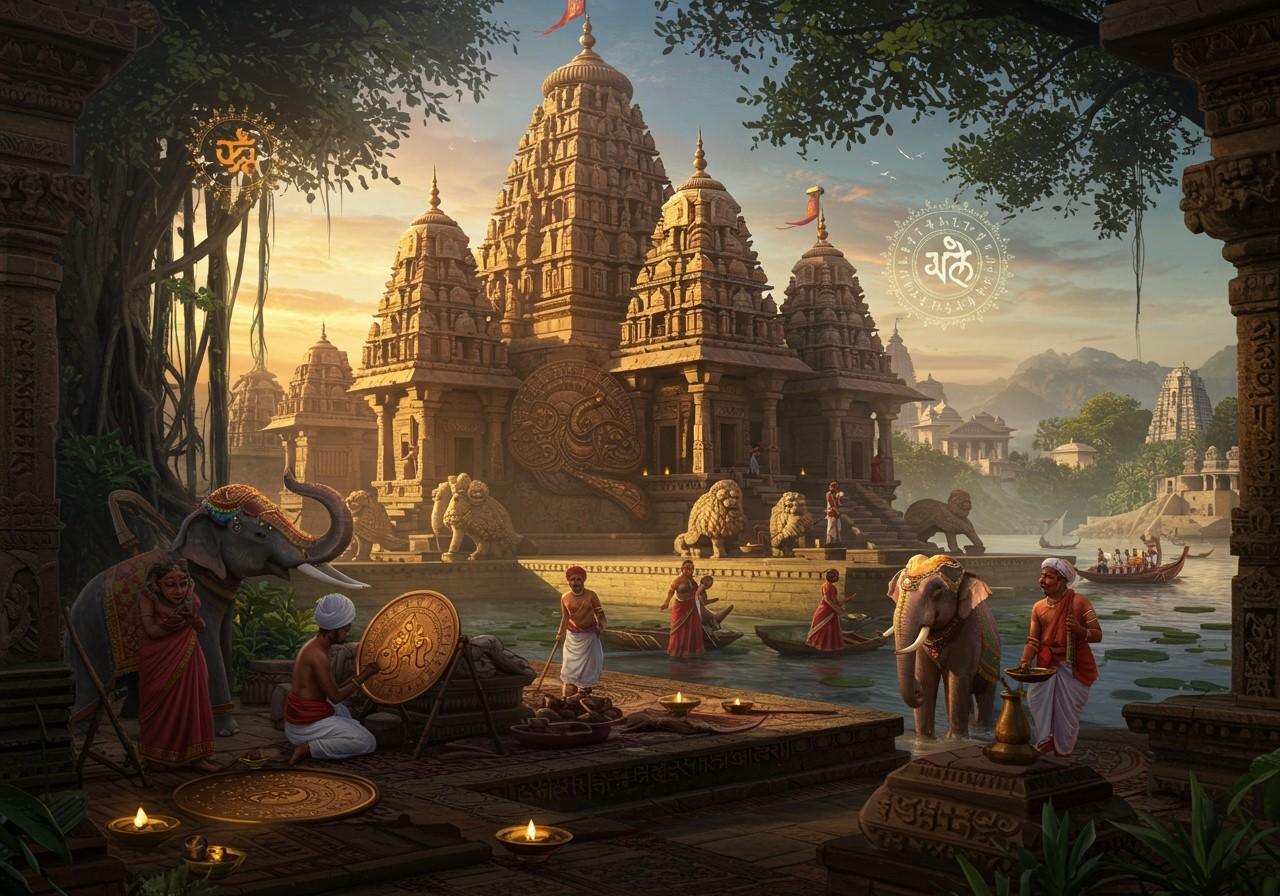
The Kadamba Dynasty, established by Mayurasharma in the 4th century AD in Karnataka, India, holds a prominent place in Indian history due to its rich cultural heritage. Their contributions to art, architecture, literature, and religious practices have left an enduring mark on the region.
Rise and Reign of the Kadambas
Mayurasharma, initially a Brahmin scholar, transitioned into a warrior and founded the Kadamba dynasty. His successors, including Kakusthavarma, further expanded the kingdom through strategic alliances and military prowess. The empire’s strategic location and military strength allowed it to exert considerable influence over the Deccan region.

Historical maps illustrate the Kadamba Empire’s territorial extent and political significance, highlighting its impact on the region’s geopolitical landscape.
Architectural Marvels and Artistic Achievements
The Kadamba dynasty is renowned for its distinctive architectural style. Characterized by the Kadamba Shikhara, a stepped pyramidal tower, their temples showcase a unique blend of Nagara and Dravida styles. The Madhukeshwara Temple in Banavasi stands as a prime example of this architectural ingenuity. The intricate carvings and sculptures adorning these temples reflect the dynasty’s artistic finesse and religious devotion.
Explore similar architectural wonders in our blog post about Badami Cave Temples.
Kadamba temple art encompasses stunning sculptures and iconography that embody their religious and cultural values. The meticulous craftsmanship and attention to detail in these works are admired for their aesthetic beauty and historical significance.
Discover the architectural wonders of Sas-Bahu Temples in our detailed guide.
Literary Contributions and Linguistic Influence
The Kadamba Empire played a pivotal role in the development of Kannada literature. Early Kannada inscriptions, such as the renowned Halmidi inscription, are attributed to the Kadamba period. The dynasty’s patronage of scholars and poets nurtured the growth of Kannada as a literary language. Works of poetry, prose, and inscriptions from this era provide valuable insights into the linguistic and cultural advancements during their reign. The Kadamba rulers’ efforts in standardizing the Kannada script significantly contributed to the language’s evolution.
Religious Patronage and Spiritual Practices
The Kadamba rulers were devout followers of Hinduism, with particular reverence for Shaivism and Vaishnavism. They commissioned the construction of numerous temples dedicated to Shiva and Vishnu, enriching the religious landscape of Karnataka. Their patronage also extended to Jainism and Buddhism, demonstrating their religious tolerance and inclusivity. The coexistence of diverse faiths during the Kadamba period is reflected in the variety of temples and religious structures they built.
Delve into the history and significance of the Bhoganandishwara Temple, another architectural gem.
Poojn.in: Connecting You to Kadamba Heritage
Poojn.in, India’s leading online store for cultural goods and services, offers a wide selection of products that can help you connect with and celebrate the rich Kadamba heritage. From traditional puja items to sacred texts and ritual accessories, Poojn.in provides everything you need to honor and preserve these ancient traditions.
-
Ashoka Bark (Ashoka Chaal): Sourced from trusted suppliers, Poojn.in offers premium quality Ashoka bark, a sacred material used in various traditional rituals.
Find authentic Ashoka bark and other ritual items on Poojn.in.
-
Traditional Puja Items: Explore a comprehensive collection of ritual materials, including copper and brass vessels, dhoop, agarbatti, kumkum, sacred threads, and ritual clothing, all crafted to uphold the sanctity of traditional practices.
Discover exquisite Radha Krishna idols and other divine sculptures for your puja room.
Visit Poojn.in today to explore our extensive collection and learn more about the rich cultural heritage of the Kadamba dynasty.
The Kadamba Legacy Endures
The Kadamba dynasty’s cultural legacy continues to resonate in Karnataka today. Festivals like Mahashivaratri and Ugadi have roots in Kadamba traditions. Contemporary Kannada literature and art draw inspiration from their contributions. Heritage sites from the Kadamba era attract tourists and scholars, showcasing their lasting impact. Preserving Kadamba cultural heritage helps us understand Karnataka’s history and traditions better.


